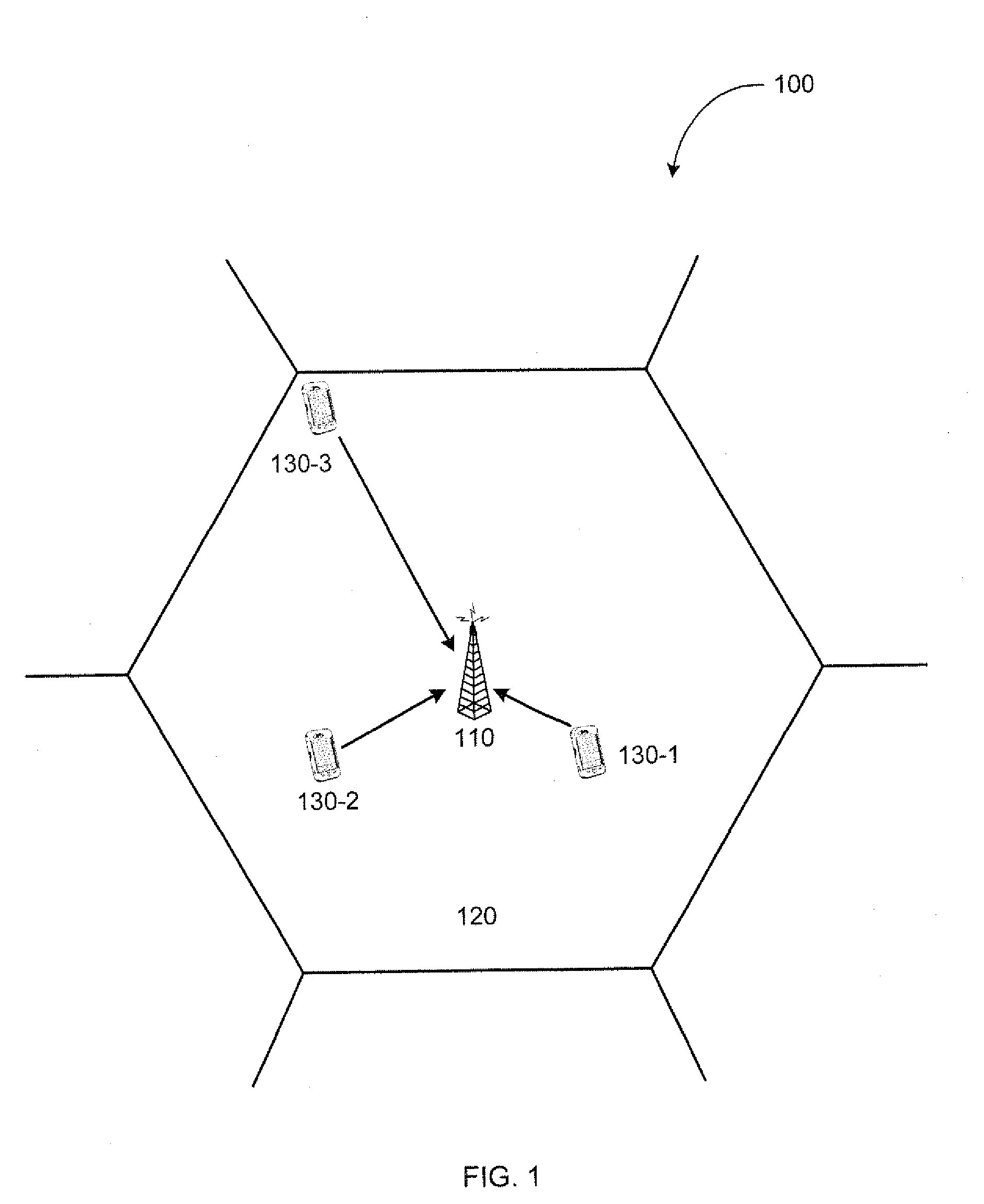Transmission mode adaptation in a wireless network
a wireless network and transmission mode technology, applied in the direction of signal quality detector error detection/prevention, transmission monitoring, line-transmission details, etc., can solve the problem of not maximizing the actual pusch throughput, measurement (srs for lte ul) may experience a different power level compared, and the selection of precoders is subject to inter-antenna imbalance variation, etc. problem, to achieve the effect of facilitating the selection of precoders
- Summary
- Abstract
- Description
- Claims
- Application Information
AI Technical Summary
Benefits of technology
Problems solved by technology
Method used
Image
Examples
Embodiment Construction
[0026]For purposes of explanation and not limitation, specific details are set forth such as particular architectures, interfaces, techniques, and so on. However, it will be apparent to those skilled in the art that the technology described herein may be practiced in other embodiments that depart from these specific details. That is, those skilled in the art will be able to devise various arrangements which, although not explicitly described or shown herein, embody the principles of the described technology.
[0027]In some instances, detailed descriptions of well-known devices, circuits, and methods are omitted so as not to obscure the description with unnecessary details. All statements herein reciting principles, aspects, embodiments and examples are intended to encompass both structural and functional equivalents. Additionally, it is intended that such equivalents include both currently known equivalents as well as equivalents developed in the future, i.e., any elements developed t...
PUM
 Login to View More
Login to View More Abstract
Description
Claims
Application Information
 Login to View More
Login to View More - R&D
- Intellectual Property
- Life Sciences
- Materials
- Tech Scout
- Unparalleled Data Quality
- Higher Quality Content
- 60% Fewer Hallucinations
Browse by: Latest US Patents, China's latest patents, Technical Efficacy Thesaurus, Application Domain, Technology Topic, Popular Technical Reports.
© 2025 PatSnap. All rights reserved.Legal|Privacy policy|Modern Slavery Act Transparency Statement|Sitemap|About US| Contact US: help@patsnap.com



